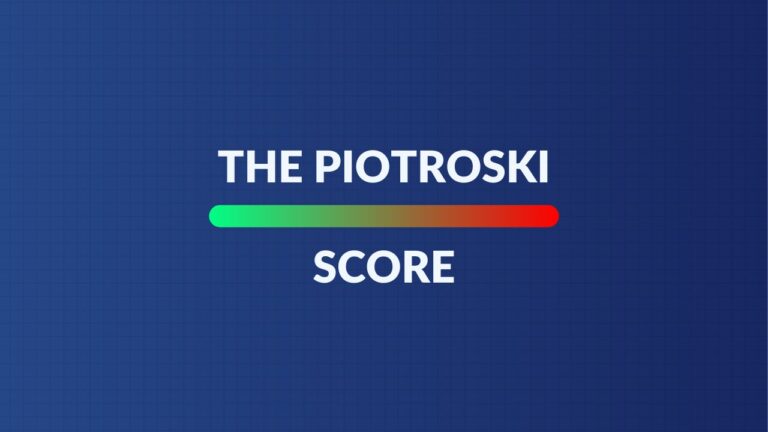Spotify ($SPOT) – Earnings Review – July 23, 2024

Demand
- Met revenue estimates & slightly beat its revenue guidance.
- FX neutral (FXN) revenue growth was 21% Y/Y; FXN premium revenue growth was 22% Y/Y; FXN ad-supported growth was 12% Y/Y.
- Missed monthly active user (MAU) guidance by 0.8%.
- Slightly beat 245 million premium subscriber guidance by 1 million. Beat 6 million net new premium subscriber guidance by 17%.
- Premium revenue per user rose 10% Y/Y FXN vs. 7% Y/Y FXN growth posted last quarter. Price hikes were the main help, and accelerated overall premium revenue growth considerably. Still, a mix shift to higher-priced countries helped too.


Source: Brad Freeman – SEC Filings, Company Presentations, and Company Press Releases
Profits & Margins
- Beat 28.2% GAAP GPM estimate by 100 bps & beat guide by 110 bps.
- Beat GAAP EBIT estimate by 12.3% & beat guide by 6.4%.
- Beat $1.05 GAAP EPS estimate by $0.28. $1.33 in GAAP EPS for quarter compares to a loss of about $0.70 (excluding restructuring charges from the Y/Y comp).


Q2 2023 GPMs exclude restructuring charges for better Y/Y comps.

Source: Brad Freeman – SEC Filings, Company Presentations, and Company Press Releases
Balance Sheet
- €5.4B in cash & equivalents.
- No traditional debt.
- Diluted share count rose 6% Y/Y; basic share count rose 2.8% Y/Y.
- Also guided to 639 million total MAUs and 251 million total premium subscribers.
Next Quarter Guidance & Valuation
- Revenue guidance met estimates. Guidance includes slightly elevated churn levels due to more price hikes.
- EBIT guidance beat estimates by 38%.
- 30.2% GAAP GPM guide beat estimates by 150 bps. Really good.
Spotify trades for 70× 2024 earnings. Earnings are sharply inflected positively Y/Y and are expected to grow by 44% Y/Y next year as well. These estimates will surely rise following today’s report.
Call & Letter Highlights
Monthly Active User (MAU) Variability:
Spotify from Q4 2022 through Q4 2023 Spotify enjoyed strong MAU tailwinds including product debuts, marketing efficiency gains and competition exiting some markets. That all helped user growth and all of those benefits were lapped last quarter. Temporary tailwinds always lead to tougher comps down the road.
During that last quarter, leadership also spoke about getting ready to lean back into more aggressive marketing spend. That led to its guidance of accelerating MAU adds throughout the year – starting this quarter. That did not happen. Spotify incurred “lower than expected” marketing spend, which, when paired with the large profit beats, tells me that’s where this weakness came from. That’s not concerning as long as it’s not running out of productive places to find new growth. That’s not happening as it sees subscriber growth “hasn’t shown any signs of slowing.”
Still Ek also spoke a bit about pursuit of new users in developing markets as its opportunity in North America and Europe becomes more mature. The return on investment in these developing markets still needs some work. To combat this, it’s focusing on crafting a more relevant, local message and also improving its free product to strengthen the top-of-funnel. Ek sees a “reversal in MAU trends as more of a when rather than an if.”
MAU to premium subscriber conversion was also quite strong, as you can see above in the outperforming result vs. expectations. This was especially true in developed markets where potential subscribers are the most valuable.
Profitability:
GPM expansion was powered by the same items on the premium and ad-supported sides. Better music and podcasting profitability, general “cost of revenue efficiencies” and lower-than-expected personnel costs (slower headcount growth) all contributed. Furthermore, the restructuring that Spotify conducted in Q2 2023 hurt GAAP GPM during that period. Of the 510 bps in Y/Y GPM expansion this quarter, 160 bps of that was related to the easier comps from this item. Audiobooks are still a material gross margin headwind. It’s incurring front-loaded costs to rapidly buildout and scale this business. Just like with its overall ad-supported segment, these investments should eventually slow as a % of overall business contribution to foster GPM leverage.
Spotify incurred €59 million in social charges during the quarter vs. €13M expected. Social charges are payroll taxes paid to employees. That expense is tied to its share price. Share price rose a lot, so charges rose a lot. Spotify doesn’t adjust guidance mid-quarter as social charge expectations evolve. But? Analyst expectations do freely float. So? That is why the EBIT beat vs. analyst consensus was so much larger than the beat vs. its own guidance. Operating expenses overall fell by 16% Y/Y due to lower personnel and marketing costs. Excluding the impact of social charges and restructuring, OpEx fell by 14% Y/Y.
“A few quarters ago, I said that while while many believe that Spotify has a great product, we needed to prove that we could also be a great business. I think we’re really starting to show this now. “
Founder/CEO Daniel Ek
Products & Subscription Packaging:
For video podcasting, Spotify now has 250,000 shows in its catalog and 170 million users who have already interacted with this newer product. It also now has 250,000 audiobook titles as part of its premium subscription in Canada, Ireland and New Zealand. As of last quarter, this form of content was already incrementally raising engagement per user by a full hour. More engagement means more value which means more pricing power. In music, Spotify debuted live listening parties for an artist’s most passionate fans to get exclusive, intimate and early access to new music. Its AI Playlist tool, which lets a user create playlists with a conversational prompt, debuted in some markets this quarter too. Creative lab was announced as its in-house advertising creative agency to assist brand campaign building. Quick Audio was announced to automate ad buyer campaign content creation with GenAI.
As Spotify continues to bolster the depth and value of its suite, prices will surely rise to augment monetization. But there’s another key monetization tool that stems from expanding beyond a music library into podcasting, digital education, audiobooks and AI discovery tools. More products means more mixing and matching and subscription tiers to more granularly and relevantly match users with compelling offerings. It allows its customers to purchase in more of an á la carte manner to sidestep paying for content they don’t really want. That should improve premium funnel conversion. For example, it just launched a new Basic Plan in Australia, the UK and the U.S. to offer ad-free music without audiobooks.
“We implemented a price increase in several key markets, including in the U.S., which we’re rolling out now with great success. In fact, we’re seeing less churn in this round of increases than we did in our prior one, which was already very low by any measure… high engagement in developed markets gives us tremendous confidence in our ability to raise prices, allowing for strong revenue growth even as those markets continue to mature.
Founder/CEO Daniel Ek
“In the U.S. today, access to all of our content [elsewhere] would cost a user approximately $26, significantly more than a Spotify subscription. Spotify remains a pretty outstanding deal.”
Founder/CEO Daniel Ek
Ad-Supported Environment:
The Spotify Audience Network grew Q/Q publishers and advertisers. We didn’t learn much more beyond this. (SPAN is Spotify’s way of serving as a conduit between buyers and platform publishers across most podcasting apps. This enjoyed 10% Q/Q growth in participating publishers following expansion into 5 new countries last quarter.
- It called slower ad-supported growth a byproduct of volatile marketer spend. This seemed to be mainly in podcasting pricing, as music impression and pricing growth were both called tailwinds.
- Ad-supported revenue rose by double digits Y/Y in all markets.
User Growth Trends:
| Y/Y MAU Growth | Q2-24 | Q1-24 | Q4-23 |
| LatAm | 22% | 21% | 22% |
| UCAN | 18% | 20% | 22% |
| Europe | 28% | 29% | 32% |
| Rest of World | 33% | 30% | 24% |
| Y/Y Premium Sub Growth | Q2-24 | Q1-24 | Q4-23 |
| LatAm | 22% | 21% | 21% |
| UCAN | 27% | 28% | 29% |
| Europe | 38% | 39% | 39% |
| Rest of World | 13% | 12% | 12% |
Take
I thought this was an excellent quarter. The very small MAU and revenue misses are due to lighter than expected marketing spend. Profit metrics (especially gross margin) were all excellent and the guide points to that trend continuing. This company continues to slash costs, jack up pricing, maintain low churn and strongly compound revenue. That ability is somewhat rare and shows you exactly how sticky their offering truly is. Congratulations to shareholders.











